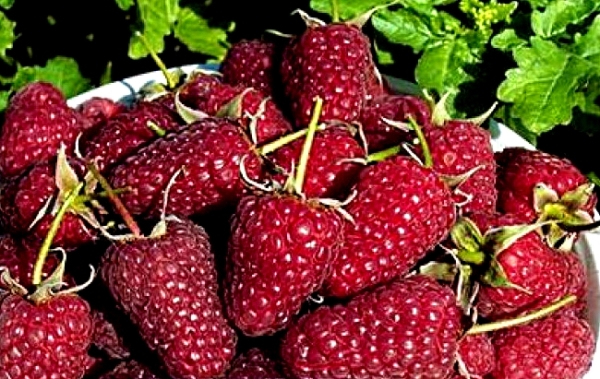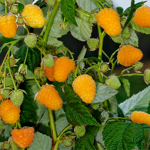Raspberry is considered to be a tasty and healthy garden plant. Therefore, it is present in the backyards of many summer residents. In ordinary raspberry varieties, fruits appear on young shoots only in the second year.. In comparison with other garden bushes or trees, this is fast, but breeders were able to further accelerate this process, for example, the varieties of remontant raspberries, the characteristics of the cultivation of which can be found below.
Table of contents
Features varieties remontany raspberry: timing of flowering and fruiting
The remontnaya raspberry includes in itself a variety of varieties bred by the selection method, whose shoots bear fruit in the first year. Its content allows you to get more yield than from ordinary or wild varieties. Why?
The repair raspberry in the beginning of spring starts up shoots from the root, which are rapidly developing and produce abundant fruits in the same season.. After they mature, the upper part of the branch dries out, and the lower part becomes woody. In the next season, these last year's bushes give fresh shoots and bring a new crop.
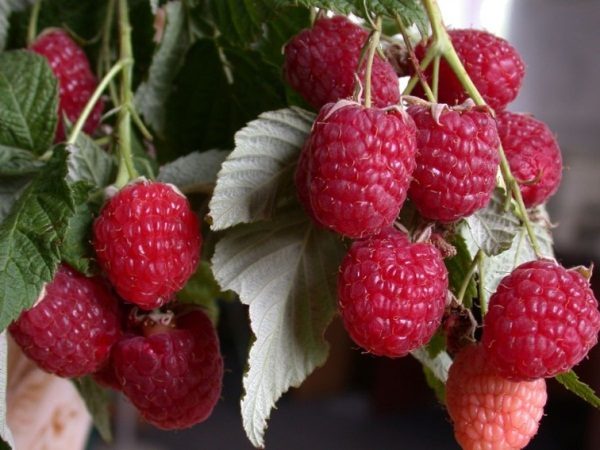
The peculiarity of these varieties is that the ripening period on the young shoots and old branches is different. This allows you to harvest a fairly long time. It is characteristic that pests rarely live on this raspberry, because it is more precocious, and the parasites still do not have time to multiply by this moment.
In one season, two harvests are harvested, but in order for this to work, we need the right care, namely, to pick the first fruits in time so that they do not drain the bush.. Despite these advantages, remontant raspberries do not reproduce as quickly as normal. I would like to note for novice gardeners, if you grow several bushes on your plot, it will take years for them to grow naturally into a large plantation. Although it may be useful, because the inconvenience is eliminated when the shoots extend beyond the designated area.
The most popular varieties of remontant raspberries are:
- penguin;
- Golden autumn;
- Heracles;
- rhinoceros;
- Polana;
- ruby necklace, etc.
- Raspberry heracles
- Raspberry Golden Autumn
- Raspberry rhino
- Raspberry penguin
- Raspberry polana
- Raspberry Ruby Necklace
Landing rules on the plot, soil preparation
For high yields it is necessary to provide raspberries with plenty of sunlight. therefore the landing area must be in an open area away from trees and buildingsthat create a permanent shadow. For remontant varieties, watering is important, so you need to choose a place where it is convenient to deliver water. Direct landing can be carried out both in the spring, and in the fall.
Raspberries can be planted in the immediate vicinity of water bodies, but groundwater should be deeper than 1 m from the surface. The best soil is loam, although the bushes are able to grow in almost any land, especially if they are provided with the necessary amount of fertilizer. Well, when in front of a raspberry on the site grew mustard or rye. If the predecessors were potatoes, peppers or tomatoes, then when planting it is necessary to add fertilizer.
To facilitate the preparation of the site, you can make fertilizer is not in the planting pits, but simply around the perimeter. To do this, for each square meter of area you need to make 2 buckets of humus and a glass of superphosphate and potassium sulfate. After that, the soil is excavated or processed by mechanized methods.
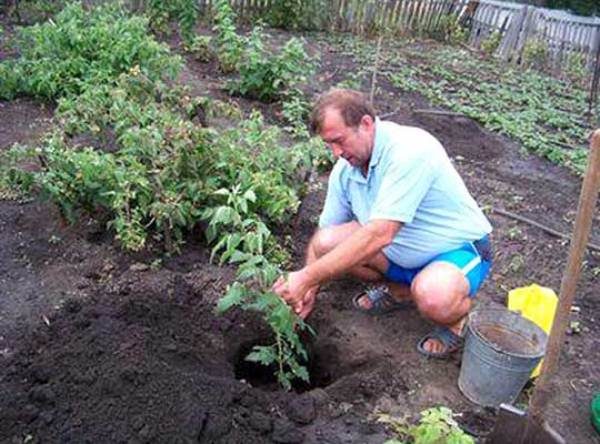
When the place is prepared, then you need to dig holes with a depth along the root neck of the seedling. The distance between the bushes should be 50-100 cm, and between the rows of 120 cm. Each plant must be watered with water per 5 l. When the liquid is fully absorbed into the soil, the ground can be mulched. If planting occurs in spring, it is useful to soak the roots of seedlings for a day in water with a growth stimulator, which will serve as an additional guarantee of high survival.
Proper care in the summer: watering, feeding and harvesting
Since remontant raspberry is actively bearing fruits, it is in dire need of moisture. For this in the summer it should be watered periodically. This should be done once a week. The soil under the bushes should always be wet. In dry times, the frequency of watering can be increased. Unlike other plants that require moisture only for a short time during the formation of the fruit, raspberries need it all the time. This is due to its peculiarity of ripening two harvests per season. With proper watering, the second collection will be only slightly worse than the first.
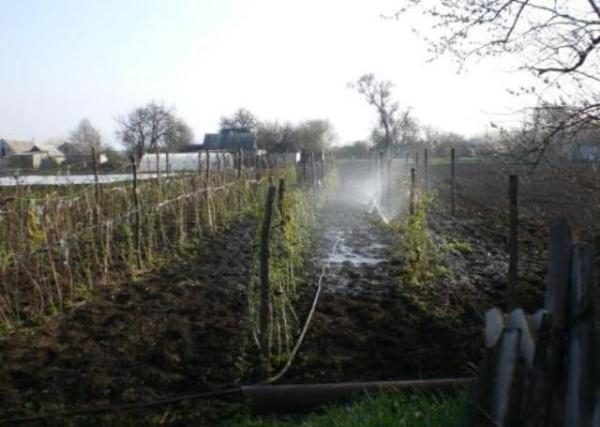
The surface of the soil should be loosened and removed weeds. In the first year after planting, the site retains many seeds of wild plants that will compete with raspberries. They need to periodically weed, not allowing the growth.With proper care for several seasons, raspberries will grow and fill all the space between the rows. Then the care will be a little easier, because she herself will not allow the development of weeds.
If the variety selected for planting has a high growth and thin branches, it will sag under the weight of the fruit. To avoid this, you can dig in or score in rows with raspberry pillars or poles at a distance of 2-3 m from each other. Between them, a rope, wire or twine is stretched on several levels. The lower support should be at a level of 50 cm from the ground, and the next one should be 50 cm higher.
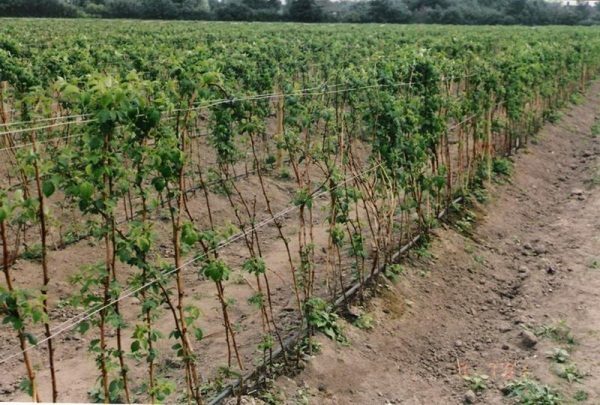
In this way it will be possible to tie up several bushes between each pair of pillars. If you do not, then during fruiting branches will fall to the ground, and the fruits will begin to deteriorate. This will be inevitable, because the distance between the bushes, while the raspberries have not grown, is very large and they do not hold each other.
How to trim bushes in spring and autumn?
Pruning can be done twice a year. The first time in spring, before flowering, and the second late autumn. This is done according to the following scheme. It is recommended to cut the bushes at a distance of 3 cm from the ground in late autumn. The resulting tops should be burned. Such an approach eliminates pests that have prepared to winter on the branches, and will give impetus to the rapid development of young shoots in the spring.
Spring pruning is to remove the dry parts of the bushes that did not survive the wintersy Such sanitary pruning is done before the first healthy kidney. The easiest way to conduct it in April, when the plant begins to actively resume vital activities. Then it is immediately clear which buds are healthy and which ones are withered. Sanitary pruning at this time does not take much time, but you need not delay with the beginning, because if you start work when the first leaves appear, then you can damage them.
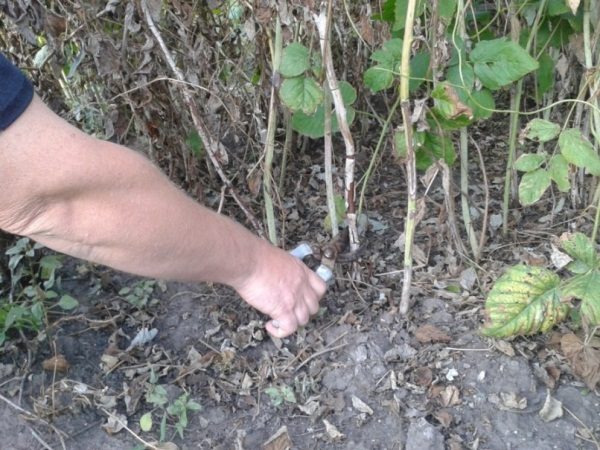
In the spring controlled planting density. It is necessary to remove the extra shoots in such a way that 1 square. m left them 10-15 pieces. If this is not done, the plants will compete with each other, and their fruits will become smaller and less sweet. If in the fall all the bushes were cut to the root, then in the spring there will be only a little damage to the young shoots if there are too many of them.
Breeding methods, tips for beginner gardeners
It is possible to multiply the repair raspberry in several ways:
- plant root suckers;
- root cuttings;
- green cuttings.
Root Scions
Cultivation of shrubs from root offspring is possible not on all varieties, since some of them have a weak underground part. The method is to dig up root processes that appear in the bushes at the age of several years. One plant can give around itself several offspring, the number of which varies from several to two dozen.

Scions grow close to the maternal shrub, so they will soon compete with it, but if they are dug up and planted in a new place, then you can get more benefits.For this, when they reach 5-10 cm, they can be dug out and seated. After they take root, they will start to grow rapidly and bring the first harvest for the next season.
Root grafting
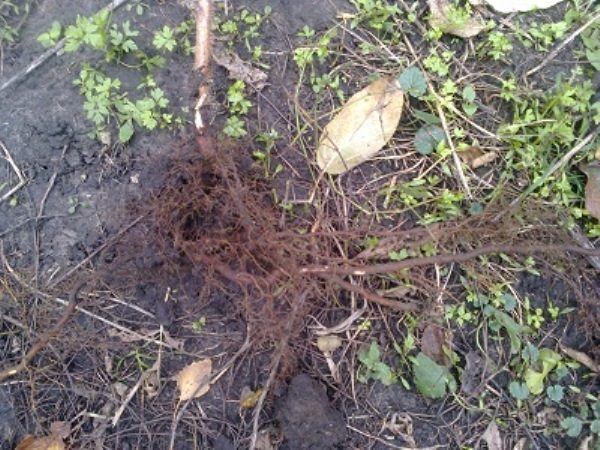
Reproduction root cuttings is that the root of a healthy plant is dug out in autumn and is divided into pieces of 2-4 cm. The resulting trimmed planted in a row to a depth of 6-8 cm and watered. In the spring, they will sprout, which will need to be watered until autumn. At the end of August, they will turn into full-fledged seedlings, and they can be transplanted to a permanent place.
Regular grafting
Breeding with green cuttings is also an effective way. It lies in the fact that in early summer, young shoots are separated from the mother bush with a small spine. To do this, it is enough to go a few centimeters into the ground and cut off the branch. After that, she planted in the ground and actively watered. For maximum efficiency, cut green shoots can be soaked in a growth promoter. In addition, if they are planted in a greenhouse, the survival rate will also increase.
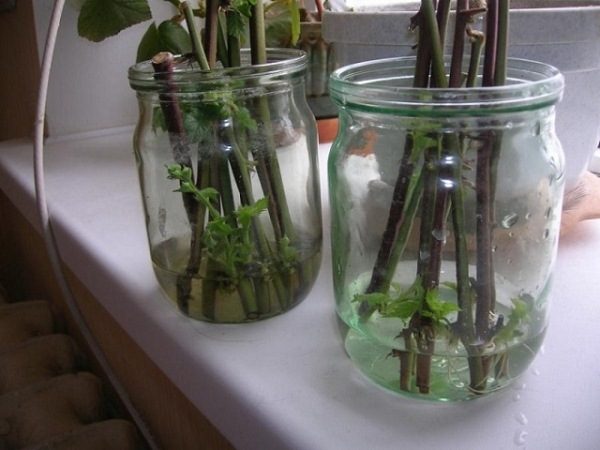
Thus, it is safe to say that to plant and care for a remonty raspberry is simple enough. Most of the time and effort will have to be applied in the first year, but when the root system gains strength, then worries will decrease. The pruning process also does not require special skills, and if the bushes are completely cut off in the fall, then in early spring the plants can hardly be given time.
